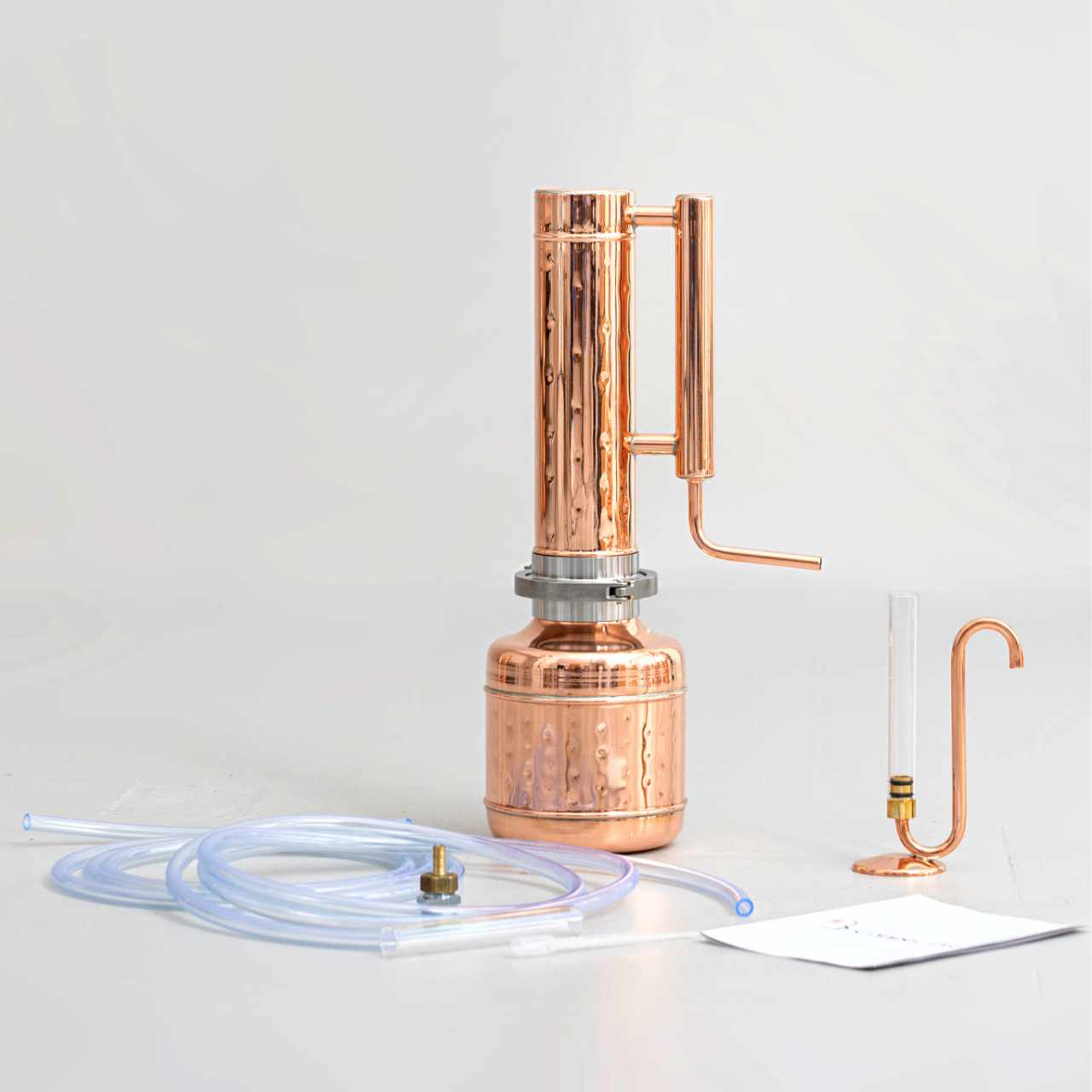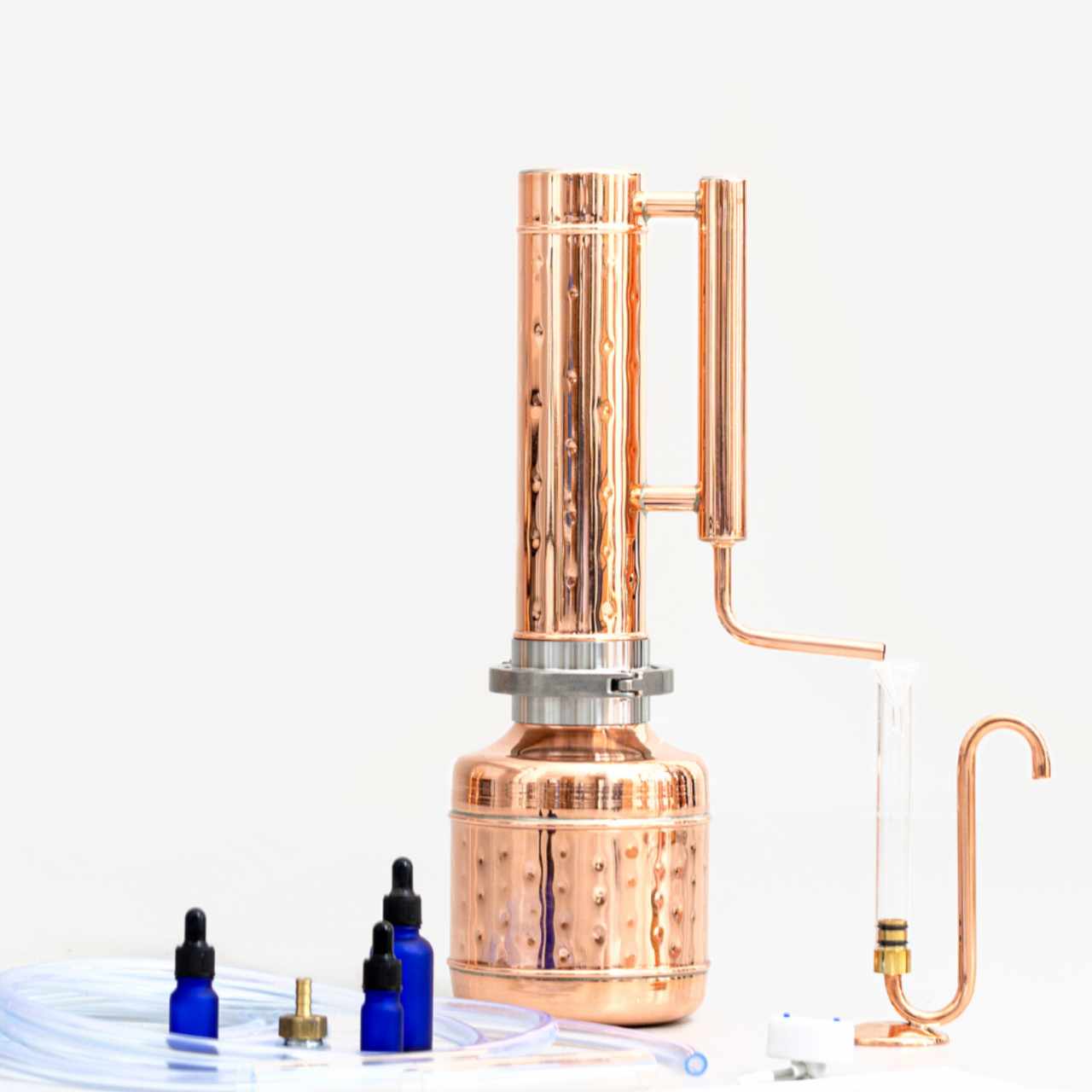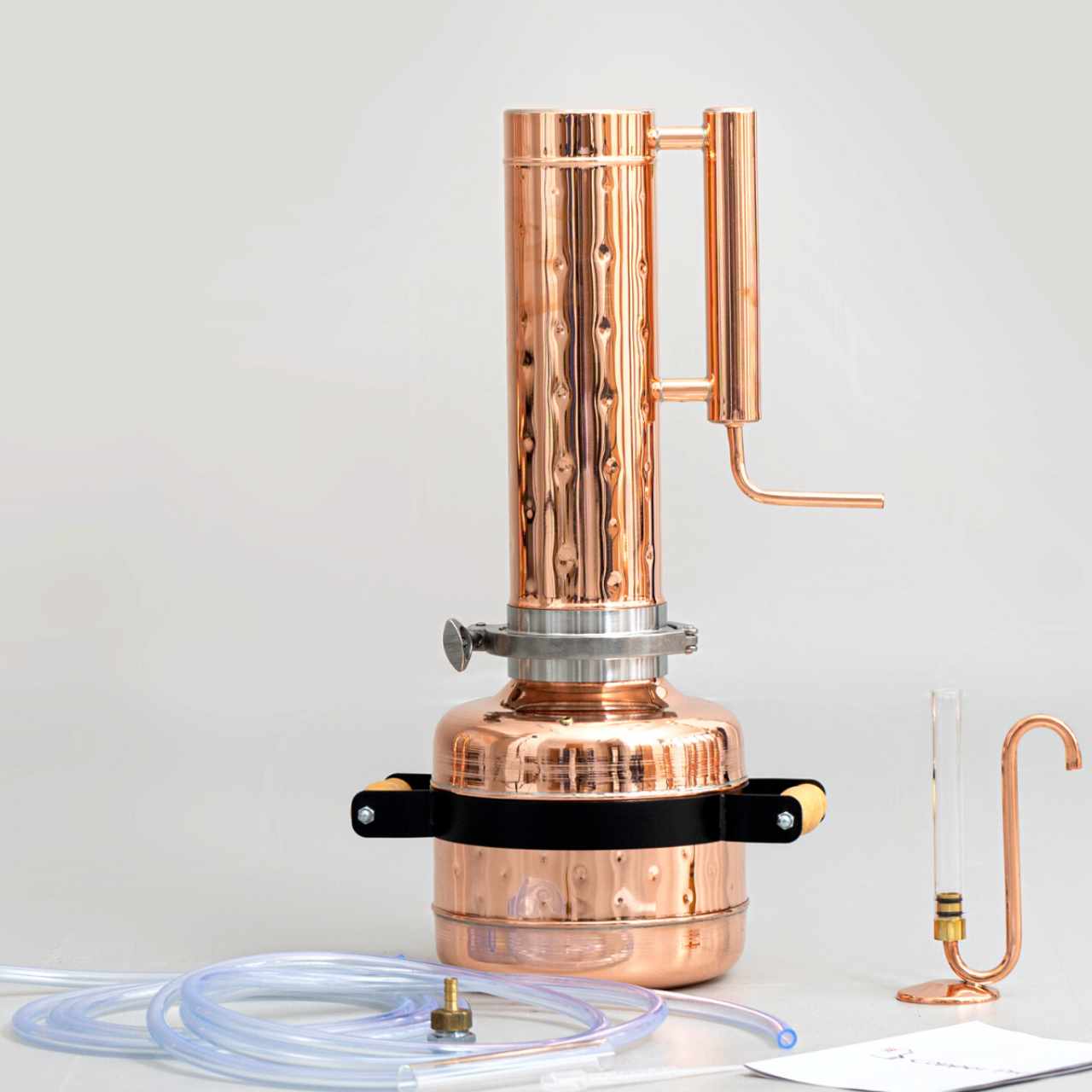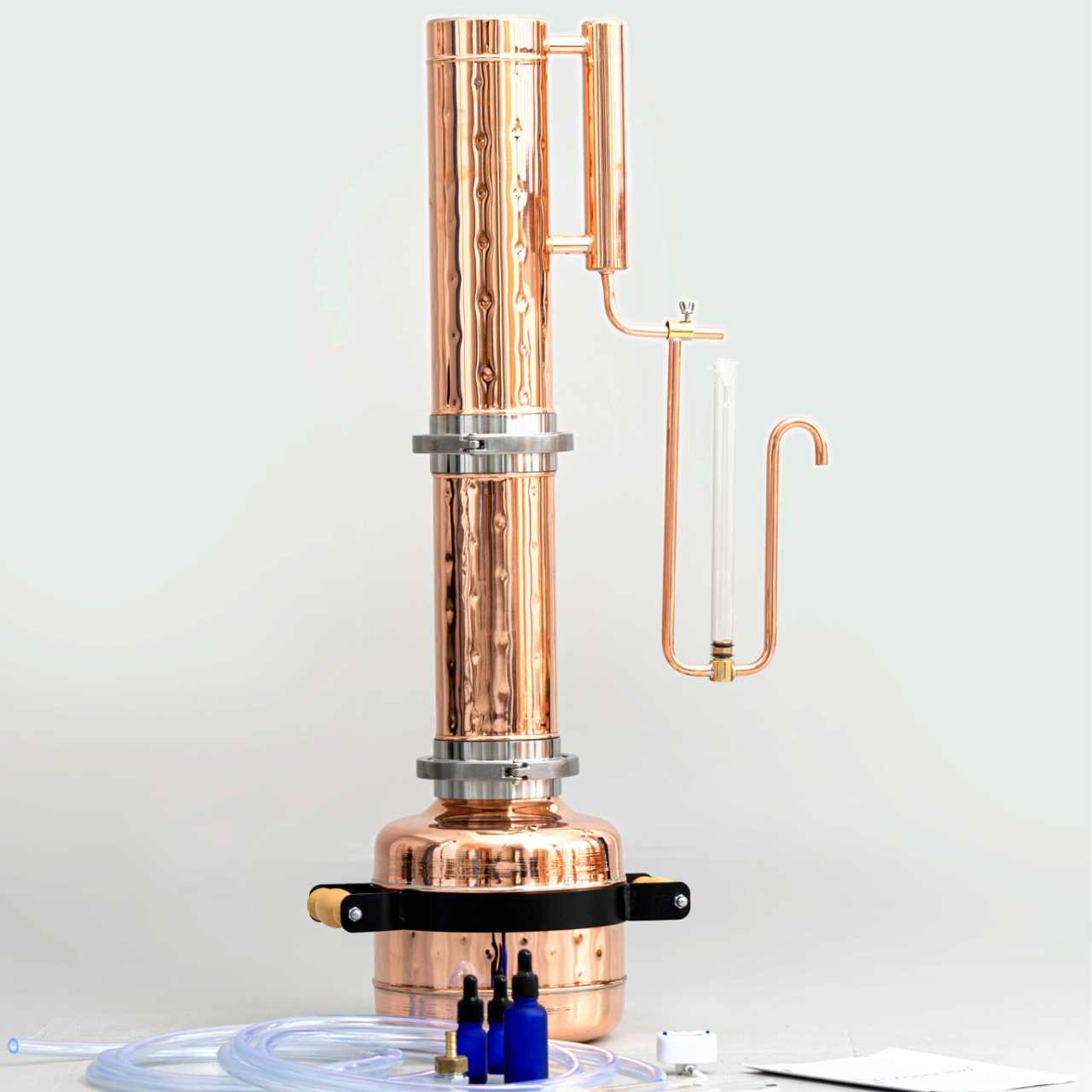
Copper Pro allows you to personally experiment with the vast amount of plant material available to us on the planet. Odor molecules from plant oils can impact us physically, mentally, emotionally, and spiritually. Each essential oil is experienced on many different levels by an individual. Having and using your Copper Pro distiller allows you to use plant material to consciously change yourself.
Brain waves are one manifestation of the way we process scent molecules. We enter a unique participatory process when we work with the plant kingdom. This measurable physical manifestation of essential oils’ abilities to influence the nervous system shows us how important it is to have freshly distilled oils on hand to work with. Using your Copper Pro distiller can help to consciously change your focus, your concentration, and your mindful awareness of your environment and daily experience.
Singular nerve cells called neurons, communicate with other individual neurons to pass information throughout the brain. Brain waves are groups of neurons collectively passing information in a collaborative fashion. Brain waves are noted when groups of nerve cells pass signals at the same rate and time. When studying the nervous system and its actions, we can detect neurons working together in these wave-like patterns more easily than if we examined the actions of a singular nerve.
Scent molecules are passed through the olfactory nerve to the cerebral cortex of the brain. They can influence these brain waves. Different states of alertness, focus, contentment, and concentration are associated with each of these wave patterns. Scent molecules can affect brain waves.
Research shows us that there are 5 distinct waves: alpha, beta, theta, delta, and gamma. Each of these patterns of waves is common in a normally functioning brain. These patterns shift throughout one’s day. They often correspond to our circadian rhythm as well as to the stimuli we are experiencing. Each of these waves has specific mental attributes and emotional components associated with it.
Brain waves can be detected, monitored, and measured using an electroencephalogram or ECG. This is a noninvasive measuring device that involves the strategic placement of electrodes on an individual’s head. These waves are measured by the ECG in frequency units designated as Hertz’s (HZ). We associate certain mental states with specific wave frequencies or Hertz’s.
The alpha wave is associated with a range of 8-13 Hz. This is considered a relaxed and alert state. It has been likened to the sensation of just waking up. It is associated with a non- distracted calm approach to life’s circumstances. You might be able to relate to this state as it is akin to the same feelings or focus you would have when walking calmly through a natural setting. An example of an essential oil that would create this sense of mindfulness would be lavender. Lavender tends to relax one by lowering tension and stress. Lavender can be combined with bergamot, and this will add another complementary dimension to increasing the alpha wave state.1,2 Bergamot is commonly known in aromatherapy circles as “Nature’s Prozac”. These oils are common examples of oils that would help to induce the alpha brain waves in an individual. These oils are associated with a relaxed and alert state of mind.
The beta wave is associated with a range of 13-30 Hz. This range can be divided between a high(16-30Hz) and low range (13-15 Hz). There are distinct differences between these two ranges, with the low range being preferable. Low beta brain waves are associated with being wide awake, with a singular and intense deep focus as the individual processes’ information. This low end of the beta range is associated with active learning. Rosemary, peppermint, and tangerine would be helpful in promoting the low beta range of brain waves.3,4 Low beta wave lengths would be desirable if one were asked to learn new material.
The high beta range is associated with anxiety, frustration, and obsession. This range is associated with overly analytical tendencies. This brain wave pattern can lead to sleep disturbances and a reduction in memory. The optimization of a low beta wave range is preferrable over encouraging the high range. If the aromatherapy practitioner desired to lower the beta waves from the high end of the spectrum range to ideally stay at the low end of the beta range, then orange oil and ylang ylang would be preferable.5. Inhaling orange or ylang ylang essential oil would offer you fucus, memory, and wakefulness. and would not overly excite the individual.
Delta brain waves are associated with deep restorative sleep. The Hertz range associated with this brain wave is the slowest, estimated to be 0-4Hz. This non rapid eye movement sleep is associated with the loss of individuation associated with sleeping. This state does not appear to respond to scent. A house fire is dangerous to its’ sleeping occupant in the delta wave pattern because the occupant would not smell the smoke and be able to quickly respond.
Theta waves are associated with a range of 4-8 Hz. With this brain wave sequence, you would be very deeply relaxed and drowsy. There would be a reduced attention span. Prayer and meditation would be associated with the slow range of theta waves. A light sleep pattern and vivid dreaming that is associated with REM sleep is also associated with theta waves. Trance-like states are associated with theta waves. Interestingly, children are more apt to exhibit this type of brain wave pattern as opposed to an adult. It might be likened to a twilight state. Frankincense and Myrrh are two scents that are associated with helping to induce theta waves.6 Frankincense and Myrrh are often used in incense blends used during meditation practices.
The gamma waves are the most energetic of the brain waves and are associated with 30 Hz and above. These waves are associated with intense concentration and high arousal in an individual. Learning and information processing are also associated with this type of wave action by the nervous system. This wave is associated with the clumping together of the stimuli associated with sight, sound, and smell. When focusing on scents associated with the gamma wave experience, consider cedar and palo santo. These scents are associated with peak spiritual experiences. 7
As you can see from this discussion, scent is core to the body’s functioning and experiences. Let Copper Pro and their quality distillers help you tap into this amazing world with limitless possibilities. Distilling your own oils allows for direct contact with the plant material. Distilling and using essential oils could impact your focus, memory, and concentration. Collaborate with the plant kingdom directly, and get distilling today!
Ojha P., Singh V., Thacker A. K., Odor-inducing modulation of electroencephalogram waves in healthy controls 2017 Natural Journal of Physiology, Pharmacy and Pharmacology
Lee I., Effects of inhalation of relaxing essential oils on electroencephalogram activity 2016 International Journal of New Technology and Research V2, Issue 5, pages 37-43
Sayorwan W., et al. Effects of inhaled rosemary oil on subjective feelings and activities of the nervous system. Scientia Pharmaceutica 2013 April-June; 81(2): 531-542
Chandharakool S., et al. Effects of tangerine essential oil on brain waves, moods and sleep onset latency molecules 2020 Oct 21; 25(20): 4865
Kwangjai J. Modification of brainwaves and sleep parameters by Citrus reticulata Blancl. 2021 Biomedical Journal Dec; 44960: 727-738
Website https://bodha.com>journal>theta scents
Website https://prabhujisgifts.com>blogs>prabhujis-gifts-blog












![Essential oil extractor 0.53G (2L) - [Premium Kit] - Copper Pro](http://copper-pro.com/cdn/shop/files/essential-oil-extractor-053g-2l-premium-kit-127057.jpg?crop=center&height=1280&v=1740390471&width=1280)
Comments (0)
Back to Blog Posts